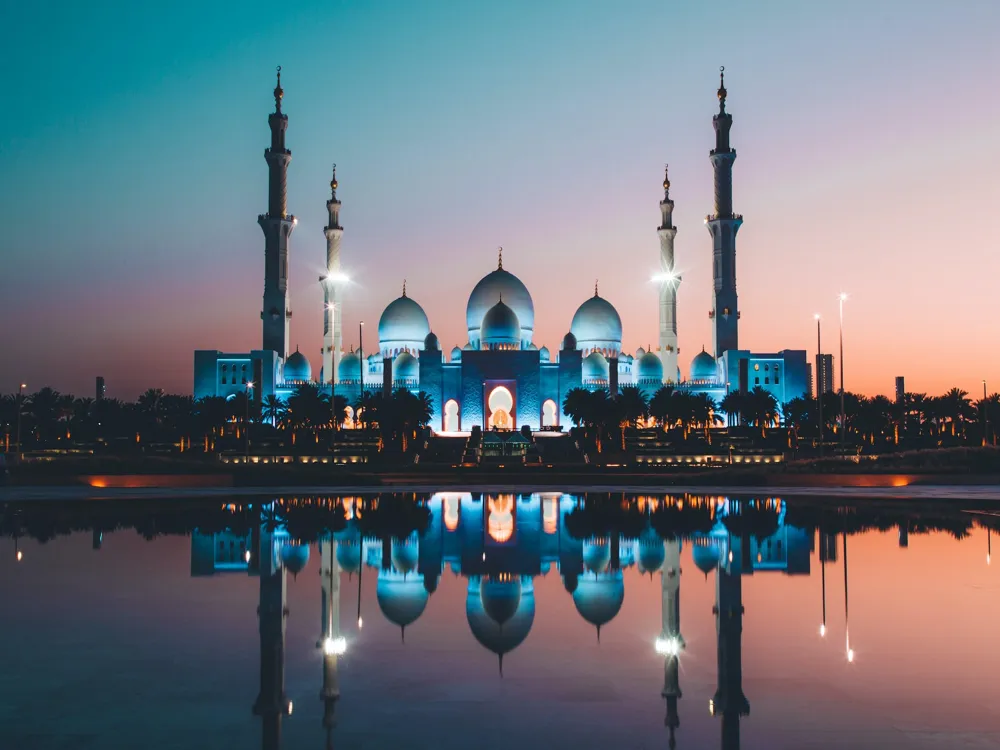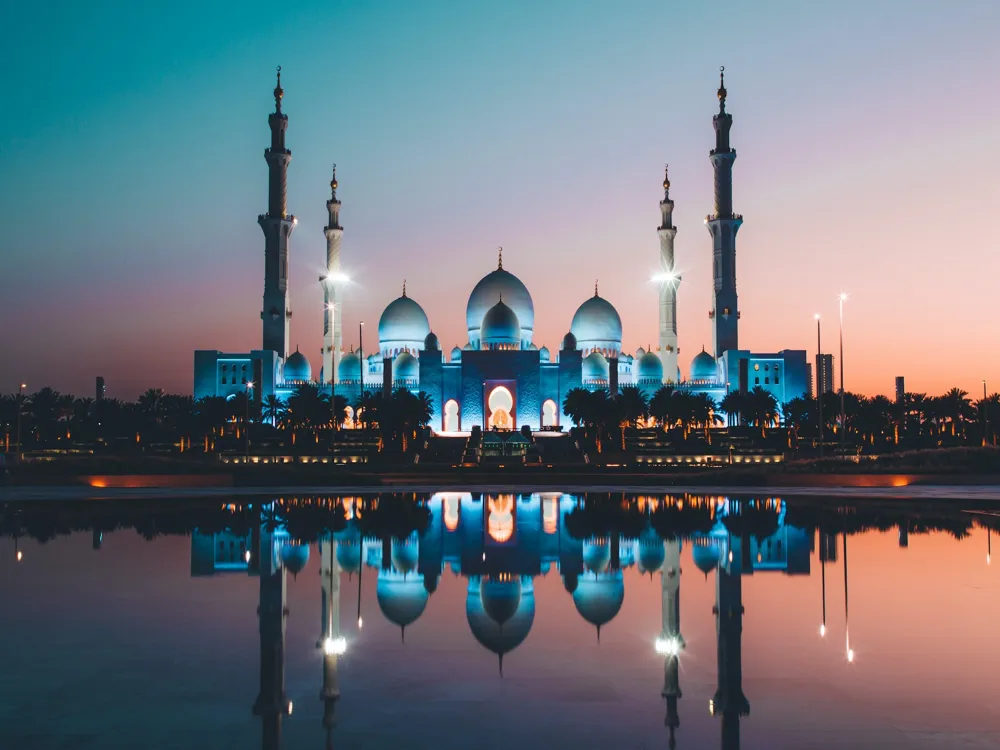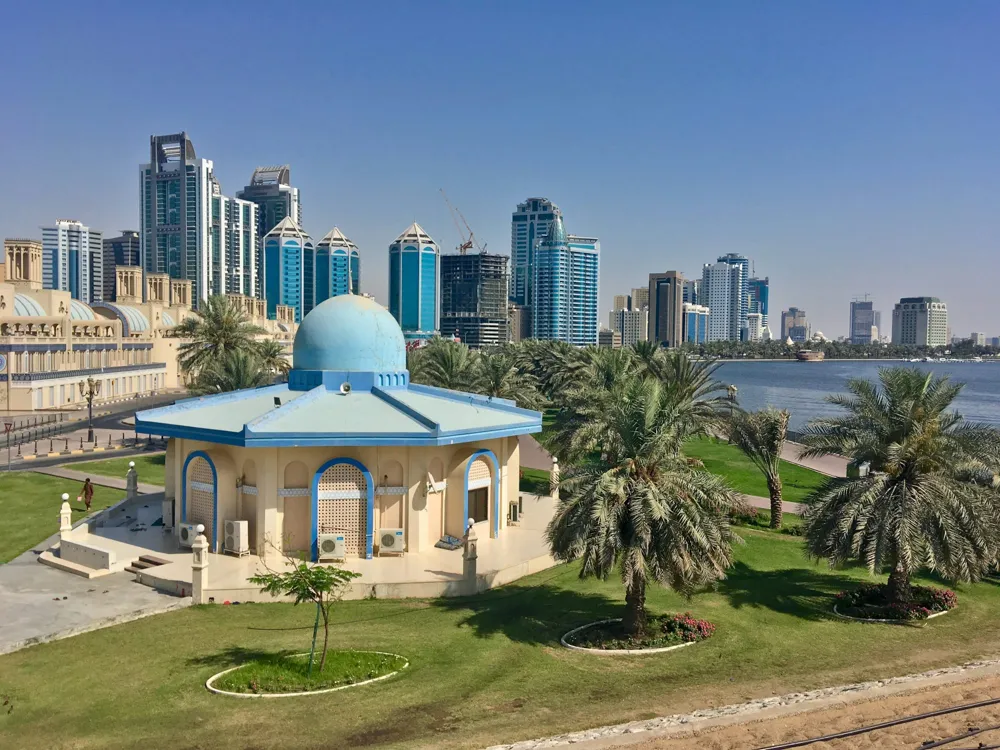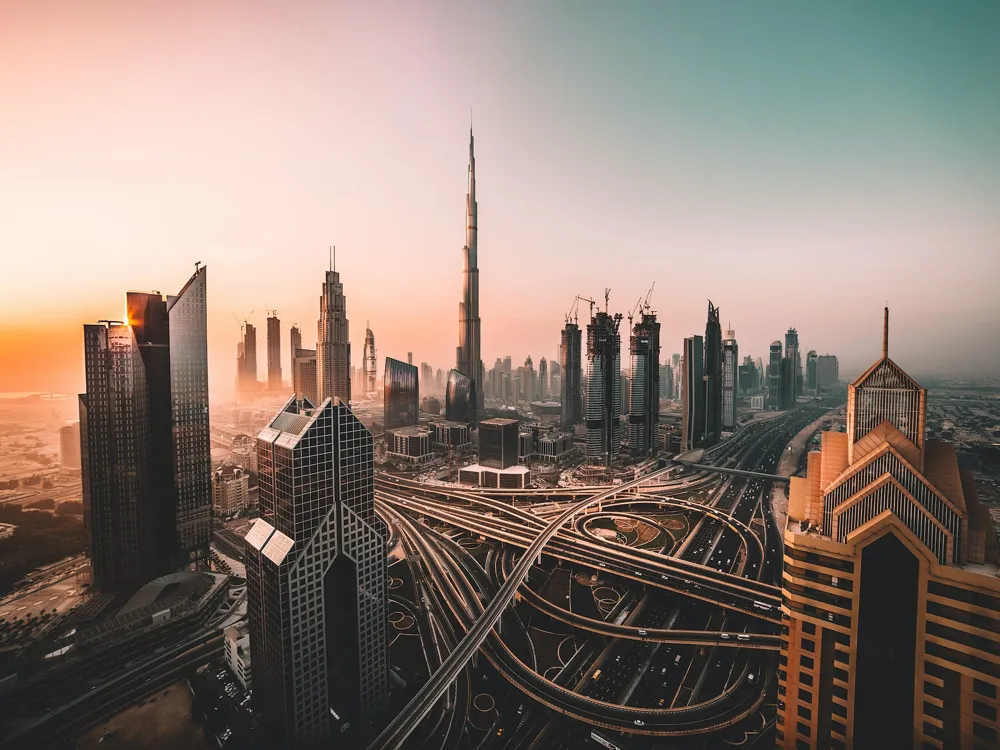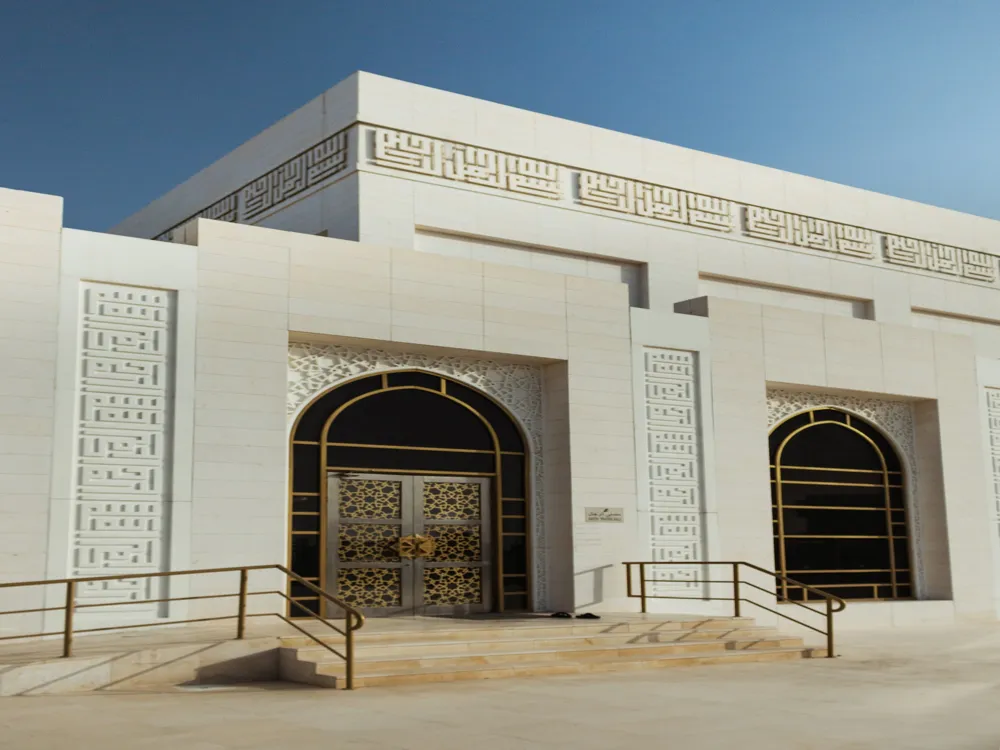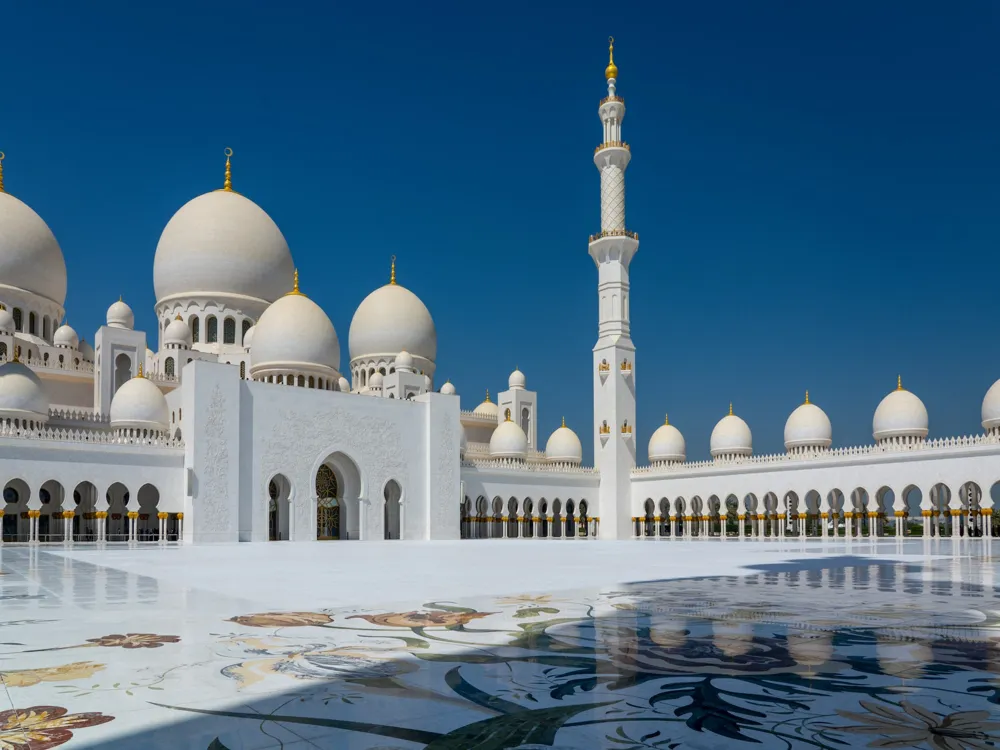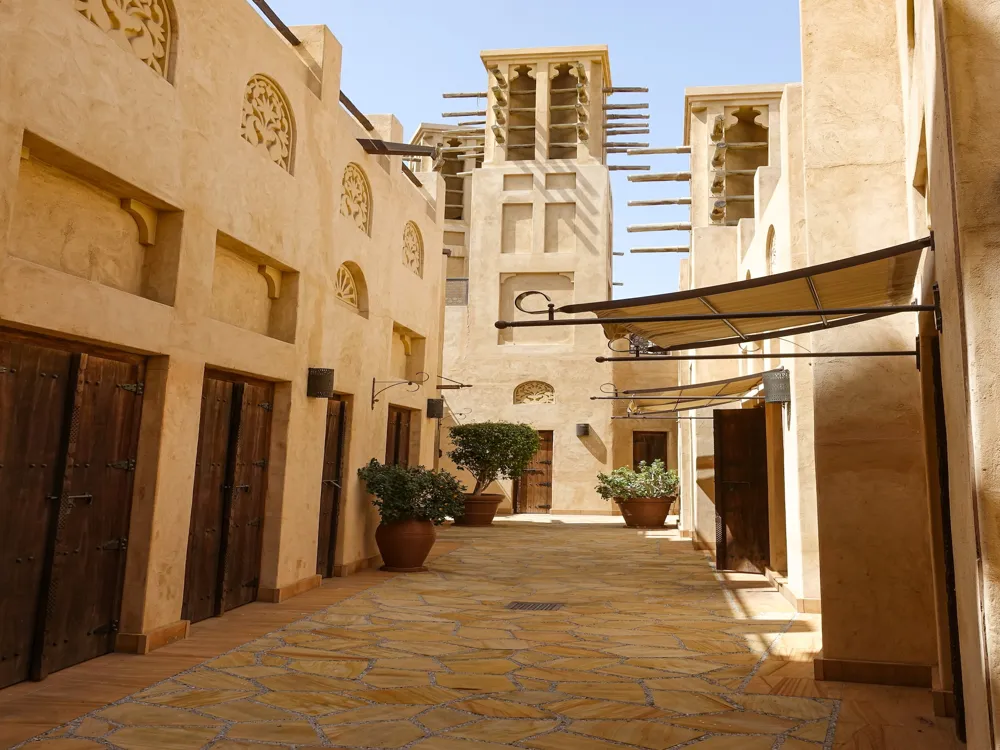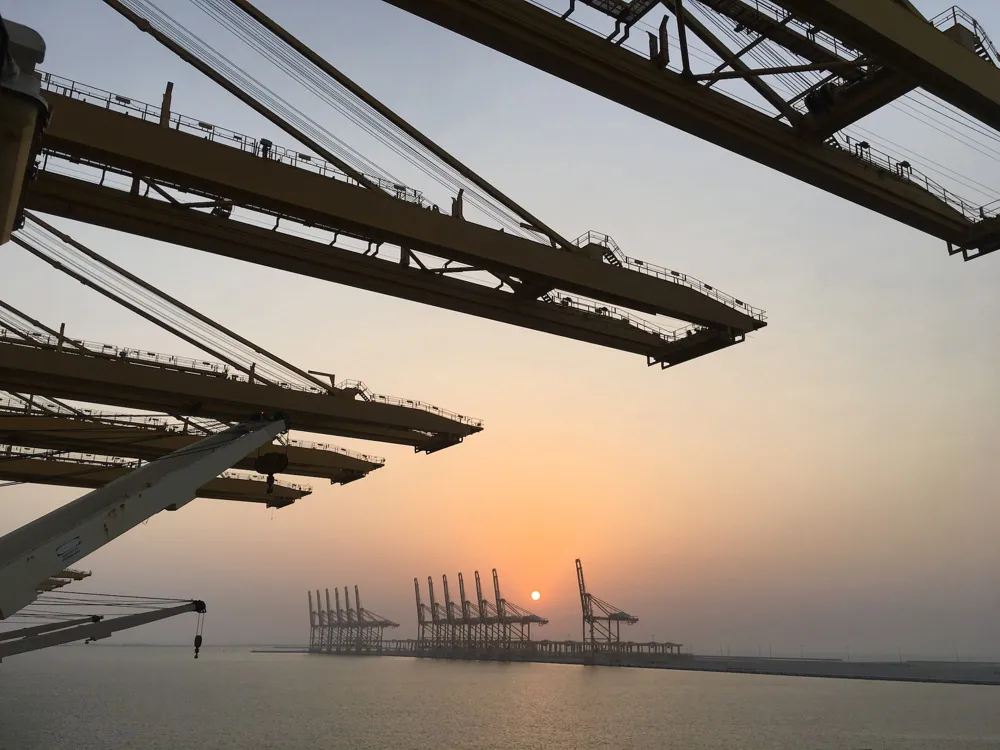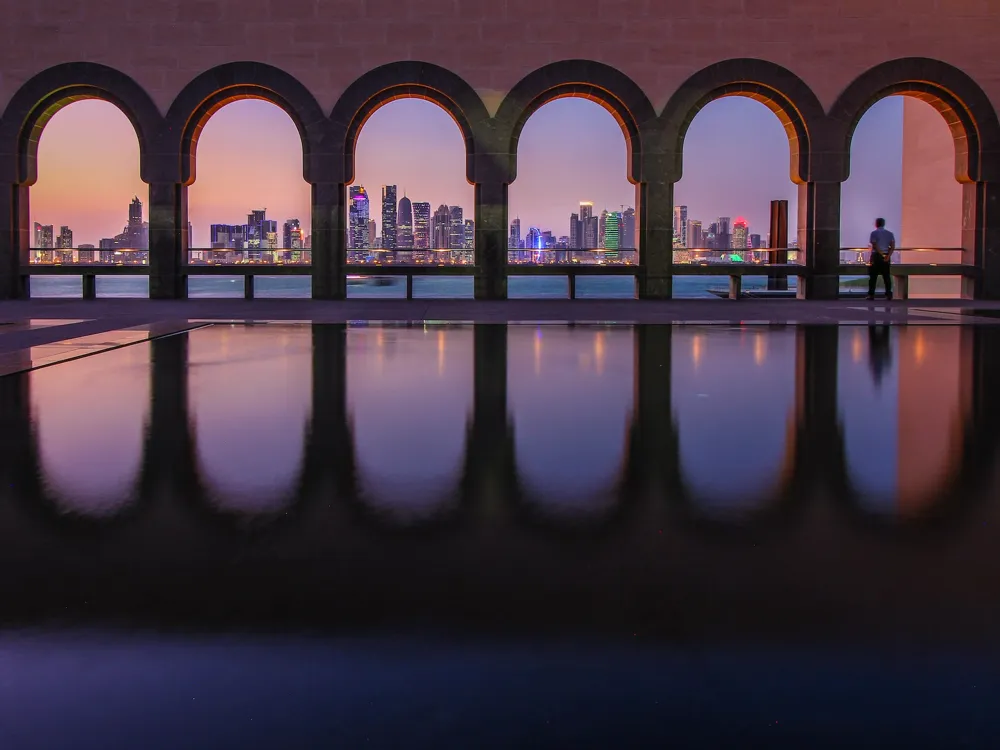Abu Dhabi, the capital city of the United Arab Emirates, stands as a jewel in the crown of the Arabian Peninsula. Known for its blend of modernity and tradition, Abu Dhabi is a bustling metropolis that seamlessly integrates its rich cultural heritage with advanced urban development. This dynamic city, which stretches out along a T-shaped island jutting into the Persian Gulf, is a hub of political, industrial, and cultural activities. The story of Abu Dhabi is one of rapid transformation. From a small pearling village, it has grown into a cosmopolitan cityscape characterized by towering skyscrapers, lush parks, and sprawling shopping malls. The city's journey began in the late 1950s and early 1960s when the discovery of oil propelled it onto the global stage. This newfound wealth funded a series of ambitious construction projects that redefined its skyline and infrastructure. Today, Abu Dhabi is not just an economic powerhouse but also a center for arts, culture, and sports, attracting millions of visitors each year. Abu Dhabi's culture is deeply rooted in the Islamic traditions of the Arabian Peninsula. This is evident in its hospitality, cuisine, and lifestyle. The city is also home to several architectural marvels that represent Islamic art and culture, including the magnificent Sheikh Zayed Grand Mosque, one of the world’s largest mosques, known for its striking white structure and intricate designs. In addition to its cultural significance, the city is committed to sustainability and environmental conservation, making it a unique blend of tradition and forward-thinking. In recent years, Abu Dhabi has made significant strides in diversifying its economy. It is actively investing in sectors like tourism, healthcare, and education, which is evident in its state-of-the-art facilities and institutions. This diversification strategy not only reduces the city's reliance on oil but also positions it as a knowledge and innovation hub in the region. As a travel destination, Abu Dhabi offers a range of experiences, from the thrill of Formula One racing at Yas Marina Circuit to the serenity of the city's pristine beaches and the enchantment of the Arabian desert. The city's culinary scene is a melting pot of global cuisines, while its shopping options range from traditional souks to luxury boutiques. With its blend of adventure, culture, and luxury, Abu Dhabi provides an unforgettable experience for all types of travelers. Abu Dhabi's architecture is a testament to its journey from a quiet fishing village to a vibrant global city. The city's skyline is a canvas of architectural diversity and innovation, showcasing a blend of traditional Arabic designs with modern, cutting-edge structures. This architectural landscape reflects the city's ambition and its cultural roots, making it a fascinating subject for both architecture enthusiasts and casual observers. The traditional architecture of Abu Dhabi is characterized by its adaptation to the harsh desert climate. Historical buildings often feature high walls, small windows, and courtyards, which were designed to keep out the heat and provide a cool, shaded space. Wind towers, an ancient form of air conditioning, are another hallmark of traditional Emirati architecture. These structures were ingeniously designed to catch and circulate the cooler breezes in the buildings. Modern architecture in Abu Dhabi is a world apart, symbolizing luxury, ambition, and innovation. The city boasts some of the most impressive contemporary structures globally, such as the Etihad Towers, a complex of five skyscrapers that offer breathtaking views of the city and the Persian Gulf. Another iconic structure is the Capital Gate building, known as the 'Leaning Tower of Abu Dhabi,' which holds the Guinness World Record for the world's furthest leaning man-made tower. However, the crown jewel of Abu Dhabi's architectural landscape is undoubtedly the Sheikh Zayed Grand Mosque. This magnificent structure, which can accommodate over 40,000 worshippers, is an architectural marvel that combines Mameluke, Ottoman, and Fatimid styles. Its design features 82 domes, over 1,000 columns, 24-carat gold gilded chandeliers, and the world's largest hand-knotted carpet. The mosque's exterior, clad in white Macedonian marble, shines brilliantly under the Arabian sun, creating a stunning visual spectacle. Another notable architectural feat is the Louvre Abu Dhabi, designed by renowned architect Jean Nouvel. This museum is a symbol of the cultural collaboration between the UAE and France. Its striking dome, composed of almost 8,000 unique metal stars, creates a mesmerizing 'rain of light' effect, echoing the overlapping palm trees in a traditional Emirati oasis. Abu Dhabi's commitment to sustainable architecture is also evident in projects like Masdar City, designed to be one of the world's most sustainable urban communities. This low-carbon, low-waste city relies entirely on renewable energy sources and features traditional architectural elements like narrow streets and shaded walkways to combat the desert heat. Abu Dhabi, while modern, is still a city with strong cultural roots in Islam. Visitors are advised to dress modestly, especially when visiting religious sites. Women should wear clothing that covers their shoulders and knees, and men should avoid shorts and sleeveless tops in conservative areas. The best time to visit Abu Dhabi is between October and April when the weather is cooler and more pleasant. During this period, outdoor activities and desert safaris are more comfortable, and the city hosts various cultural and entertainment events. Abu Dhabi has strict laws and customs. Visitors should familiarize themselves with local laws, especially those related to alcohol consumption, public behavior, and social customs. Public displays of affection, for instance, are frowned upon. While Abu Dhabi's cityscape is mesmerizing, its surrounding areas, like the Liwa Oasis and the Empty Quarter desert, offer unique experiences. Desert safaris, camel treks, and star-gazing sessions provide a glimpse into the region's natural beauty and traditional Bedouin lifestyle. Abu Dhabi has a well-developed public transport system, including buses and taxis. Renting a car is also a viable option for more flexibility. However, visitors should be aware of the city's driving laws and customs. Reaching Abu Dhabi is convenient due to its status as a global hub. The Abu Dhabi International Airport is well-connected to major cities around the world. Upon arrival, visitors have multiple transportation options to reach the city center, including taxis, buses, and car rentals. The airport is equipped with state-of-the-art facilities, ensuring a comfortable transit experience for travelers. For those preferring land travel, Abu Dhabi is well-connected by road to other Emirates and neighboring countries. The city’s road network is modern and well-maintained, making travel by car or bus a smooth experience. Additionally, for a more luxurious journey, visitors can opt for the Etihad Rail service, which will connect Abu Dhabi to other key destinations in the UAE and the Gulf region. Abu Dhabi is also accessible by sea. The Zayed Port and other marinas in the city accommodate private yachts and international cruise ships, offering another scenic route for visitors to arrive in the city. The picturesque coastline and world-class port facilities make arriving by sea a unique and enjoyable experience. Read More:Overview of Abu Dhabi
Architecture of Abu Dhabi
Tips When Visiting Abu Dhabi
Dress Appropriately
Best Time to Visit
Respect Local Customs and Laws
Explore Beyond the City
Transportation Options
How To Reach Abu Dhabi
Al Ain National Museum
Abu Dhabi
₹ 23,000 onwards
View abu-dhabi Packages
Weather :
Tags : Museum
Timings : Tuesday - Sunday: 8:00 AM - 7:30 PM,
Friday: 3:00 PM - 7:30 PM
Time Required : 2 - 3 hours
Entry Fee : Adults - AED 3,
Children (under 10 years) - AED 1
Planning a Trip? Ask Your Question
Abu-dhabi Travel Packages
View All Packages For Abu-dhabi
Top Hotel Collections for Abu-dhabi

Private Pool

Luxury Hotels

5-Star Hotels

Pet Friendly
Top Hotels Near Abu-dhabi
Other Top Ranking Places In Abu-dhabi
View All Places To Visit In abu-dhabi
View abu-dhabi Packages
Weather :
Tags : Museum
Timings : Tuesday - Sunday: 8:00 AM - 7:30 PM,
Friday: 3:00 PM - 7:30 PM
Time Required : 2 - 3 hours
Entry Fee : Adults - AED 3,
Children (under 10 years) - AED 1
Planning a Trip? Ask Your Question
Abu-dhabi Travel Packages
View All Packages For Abu-dhabi
Top Hotel Collections for Abu-dhabi

Private Pool

Luxury Hotels

5-Star Hotels

Pet Friendly










